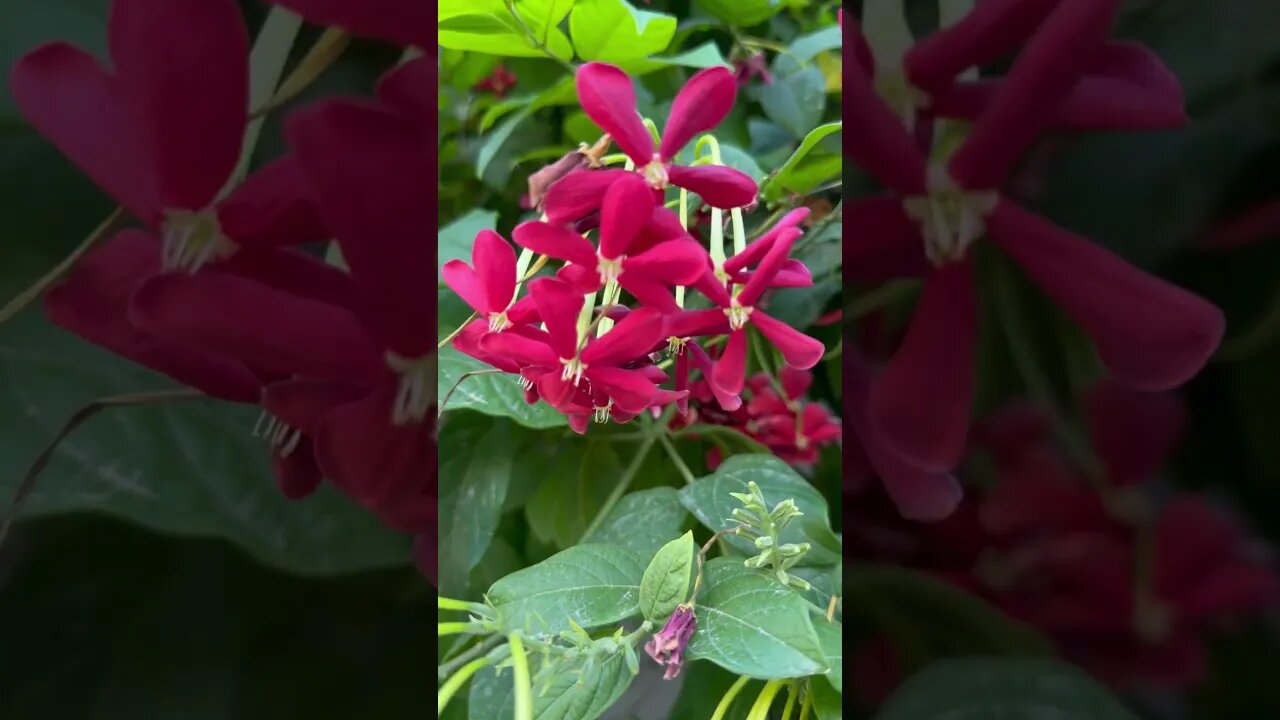Premium Only Content

What is Malabar Madhu Malati?
#climbingvine #indianvines #masonwilliams #hereamI
Combretum malabaricum, commonly known as Malabar Madhu Malati, is a flowering vine native to the Western Ghats region of India. Here's everything you need to know about this plant:
Botanical Description: Malabar Madhu Malati is a woody, climbing vine that can reach a height of up to 10 meters. It has long, twining stems that help it climb and attach to surrounding vegetation or structures. The leaves are simple, opposite, and ovate with pointed tips. They are usually green and smooth.
Flowers: The flowers of Malabar Madhu Malati are one of its most striking features. They are small, tubular, and fragrant, with a beautiful pale yellow color. The flowers are arranged in clusters or inflorescences, which arise from the leaf axils. The blooming period typically occurs during the summer and early monsoon seasons.
Distribution and Habitat: This species is endemic to the Western Ghats, a mountain range along the western coast of India. It is found in the states of Kerala, Karnataka, Maharashtra, and Tamil Nadu. Malabar Madhu Malati grows in various habitats, including moist deciduous forests, semi-evergreen forests, and along the edges of streams and rivers.
Ecological Significance: Malabar Madhu Malati plays a vital role in the ecosystem it inhabits. The flowers attract a variety of pollinators, such as bees, butterflies, and birds, which help in the plant's reproduction. The vine also provides cover and nesting sites for birds and small mammals.
Medicinal Uses: In traditional medicine, various parts of Malabar Madhu Malati are used for their medicinal properties. The leaves and stems are believed to possess anti-inflammatory, anti-diabetic, and anti-microbial properties. They are used in the treatment of wounds, skin diseases, and fever. However, it's important to note that further scientific research is needed to validate these traditional uses.
Cultivation: Malabar Madhu Malati can be grown as an ornamental plant in tropical and subtropical regions. It thrives in well-draining soil with moderate moisture. The vine requires support for climbing, so it can be trained on trellises, fences, or other structures. It prefers a sunny to partially shaded location.
Conservation Status: The Western Ghats, including the regions where Malabar Madhu Malati is found, is recognized as a biodiversity hotspot. Due to habitat loss and fragmentation, this species is facing threats in its natural range. It is important to protect and conserve the habitats where it occurs to ensure its long-term survival.
-
 LIVE
LIVE
BEK TV
22 hours agoTrent Loos in the Morning 4/30/2025
7,494 watching -
 15:35
15:35
The Illusion of Consensus
1 day agoRav Arora Warns Danger of Mass Immigration In Canada
5.21K3 -
 26:33
26:33
CatfishedOnline
23 hours agoI Sent $150k And Sold My Home For Online Love!
28.3K14 -
 7:37
7:37
The Shannon Joy Show
11 hours ago💀 Doctor Death: NY’s Suicide Bill
10.2K9 -
 19:05
19:05
This Bahamian Gyal
14 hours agoWhy would SHANNON SHARPE risk EVERYTHING for THIS?
6.73K5 -
 34:53
34:53
Uncommon Sense In Current Times
15 hours ago $1.77 earnedEconomist Breaks Down Trump Tariffs | Dr. Jonathan Newman
23.6K5 -
 13:23
13:23
NinjaGamblers
22 hours ago $0.30 earnedMasaniello Betting Strategy at Roulette: Guaranteed Wins Every Time??
5.72K2 -
 1:00:43
1:00:43
Trumpet Daily
19 hours ago $4.13 earnedCanada Hates Trump More Than the Trudeau Disaster - Trumpet Daily | Apr. 29, 2025
14.2K26 -
 53:01
53:01
State of the Second Podcast
16 hours agoDisarming Americans One Law at a Time (ft. Krate Tactical)
7.43K2 -
 44:36
44:36
The Official Steve Harvey
12 hours ago $0.43 earnedThe journey ain't easy, but the destination is worth it
10.3K1